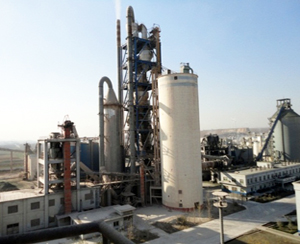The intention of Mitsubishi cement to withdraw from China's cement sector was confirmed on 14 April, having earlier signed an agreement with state-run China National Building Material to sell its stake in Yantai Mitsubishi Cement in Shandong province. Oversupply of the Shandong market and the stricter environmental regulations are taking their toll on local cement producers, while the government continues to urge its policy of industrial consolidation.
There are still over 200 cement producers listed as manufacturing cement in Shandong province, but their operating environment is becoming increasingly challenging. This has been particularly highlighted over the last year by the high-profile case of Shandong Shanshui Cement Group, which defaulted on a US$145m bond in February and has been fighting asset seizure with an injunction this last month. CNBM is no doubt watching events closely as it has a 16.67 per cent share in Shanshui Cement.
Environmental pressures
Shandong is also the location of Binani Cement’s Chinese venture, which operates as Shandong Binani Rongan Cement Co Ltd with Rizhao Rongan Construction Materials Co Ltd. The Indian manufacturer has 3Mta cement capacity in the province at Dongguan town and was hoping to add a new 1.4Mta split grinding plant at Dongjiakou Port, 75km from the clinker plant. However, the company’s 2015-16 company report shows that the Dongguan plant was not operational from January to March 2016, due to government environmental regulations.
Environmental restrictions have impacted on production in Shandong and many of the northern provinces. In March 2017 the state council released a plan to further restrict the environmental impact of the coal, cement and steel industries. To curb air pollution, 28 cities in the Beijing-Tianjin and Hebei regions plus Shandong, Shanxi and Henan provinces have been ordered to suspend production during China's heating season (15 November 2016 -15 March 2017).
Repeat of the Hebei story?
There is every likelihood that Shandong province could follow the trend being set by Hebei province, where Yi-an was a typical cement-producing town with more than 100 plants only a few years ago, but now it has just one cement plant remaining. The town depends for 60 per cent of its GDP from this one cement facility, but air pollution has crippled the local industry and oversupply added to closures after 2013. Despite such a reduction of industrial activity in Hebei, its capital, Shijiazhuang, was still ranked the worst air-polluting city among 28 northern Chinese cities in April 2017.
A glimmer of hope
However, mainly because of production discipline and the elimination of high-cost lines, along with further consolidation, cement prices have surged nationally in the last six months to their highest levels in three years. Government-led consolidation and demolition of high-polluting, ineffecient wet-process plants has seen the disappearance of many cement producers. By reducing capacity in some areas, the state has started to bring supply and demand back into balance, which in turn has helped cement pricing. The big mergers will see two state corporations, CNBM and Sinoma, come together and BBMG, the 10th ranked cement producer, will merge with China's No 4, Tangshan Jidong Cement. The new cement sector that emerges in China will be led by very powerful companies with vast cement capacities, but they will be tightly held to account over their environmental responsibilities.
Chinese cement output in 2017
Domestic cement production in 1Q17 totalled 441.15Mt, down 0.3 per cent YoY, according to the National Bureau of Statistics of China (NBSC). In March 2017 alone, cement output reached 201.62Mt, up by 0.3 per cent YoY, said NBSC. This equates to an average industry output of 6.5Mtd, up from an average of 4.07Mtd in January and February 2017. In 2016 the peak average cement production occurred in September, when 7.46Mtd of cement was produced in China.


